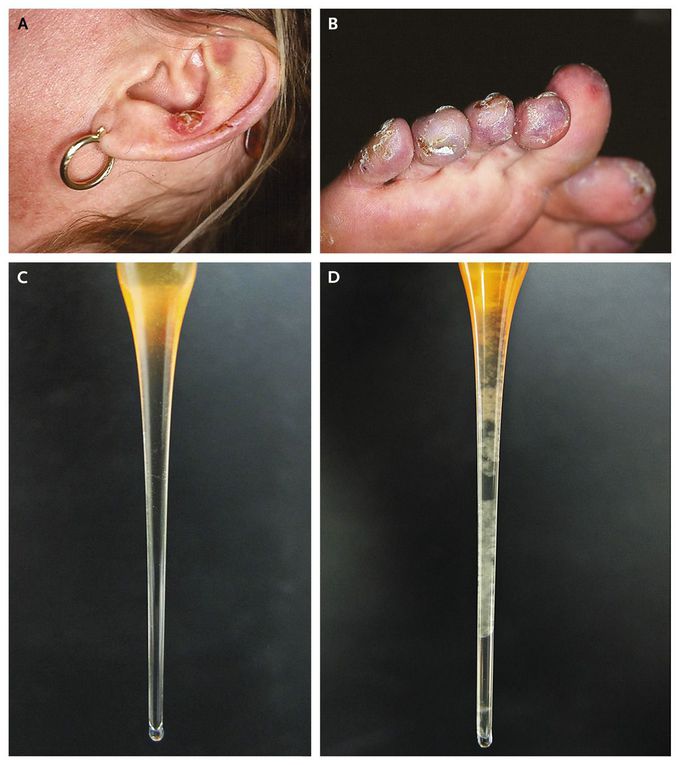


Familial Primary Cryofibrinogenemia
A 50-year-old woman presented with a history of painful lesions involving cold-exposed areas of skin, a condition that had worsened every fall and disappeared every spring since childhood. The physical examination revealed ulcers, livedo, and bluish-purple discolorations with crusts and scar tissue on the ears (Panel A), hips, knees, fingers, and toes (Panel B). Many other members of the patient's family reported having similar symptoms. Laboratory evaluation showed a plasma cryofibrinogen level of 850 mg per liter. Cryofibrinogenemia is diagnosed when plasma that is clear at 37°C (Panel C) develops a precipitate when it is cooled to 4°C (Panel D). Unlike cryoglobulins, this cryoprecipitate does not form in serum. Symptoms result from vascular occlusion in cold-exposed areas. The condition is most often associated with an underlying inflammatory disorder, infection, or cancer, but familial primary cases with an autosomal dominant inheritance pattern have been described. In this patient, dextran, stanozolol, and nifedipine were administered, but cold avoidance was the only effective treatment.

